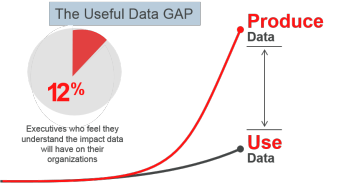Big Data Algorithm Identifies Rogue Employees by Hugh Son.
From the post:
Wall Street traders are already threatened by computers that can do their jobs faster and cheaper. Now the humans of finance have something else to worry about: Algorithms that make sure they behave.
JPMorgan Chase & Co., which has racked up more than $36 billion in legal bills since the financial crisis, is rolling out a program to identify rogue employees before they go astray, according to Sally Dewar, head of regulatory affairs for Europe, who’s overseeing the effort. Dozens of inputs, including whether workers skip compliance classes, violate personal trading rules or breach market-risk limits, will be fed into the software.
“It’s very difficult for a business head to take what could be hundreds of data points and start to draw any themes about a particular desk or trader,” Dewar, 46, said last month in an interview. “The idea is to refine those data points to help predict patterns of behavior.”
…
Sounds worthwhile until you realize that $36 billion in legal bills “since the financial crisis” covers a period of seven (7) years, which works out to be about $5 billion per year. Considering that net revenue for 2014 was $21.8 billion, after deducting legal bills, they aren’t doing too badly. 2014 Annual Report
Hugh raises the specter of The Minority Report in terms of predicting future human behavior. True enough but much more likely to discover cues that resulted in prior regulatory notice with cautions to employees to avoid those “tells.” If the trainer reviews three (3) real JPMorgan Chase cases and all of them involve note taking and cell phone records (later traced), how bright do you have to be to get clued in?
People who don’t get clued in will either be thrown under the bus during the next legal crisis or won’t be employed at JPMorgan Chase.
If this were really a question of predicting human behavior the usual concerns about fairness, etc. would obtain. I suspect it is simply churn so that JPMorgan Chase appears to be taking corrective action. Some low level players will be outed, like the Walter Mitty terrorists the FBI keeps capturing in its web of informants. (I am mining some data now to collect those cases for a future post.)
It will be interesting to see if Jamie Dimon electronic trail is included as part of the big data monitoring of employees. Bets anyone?
